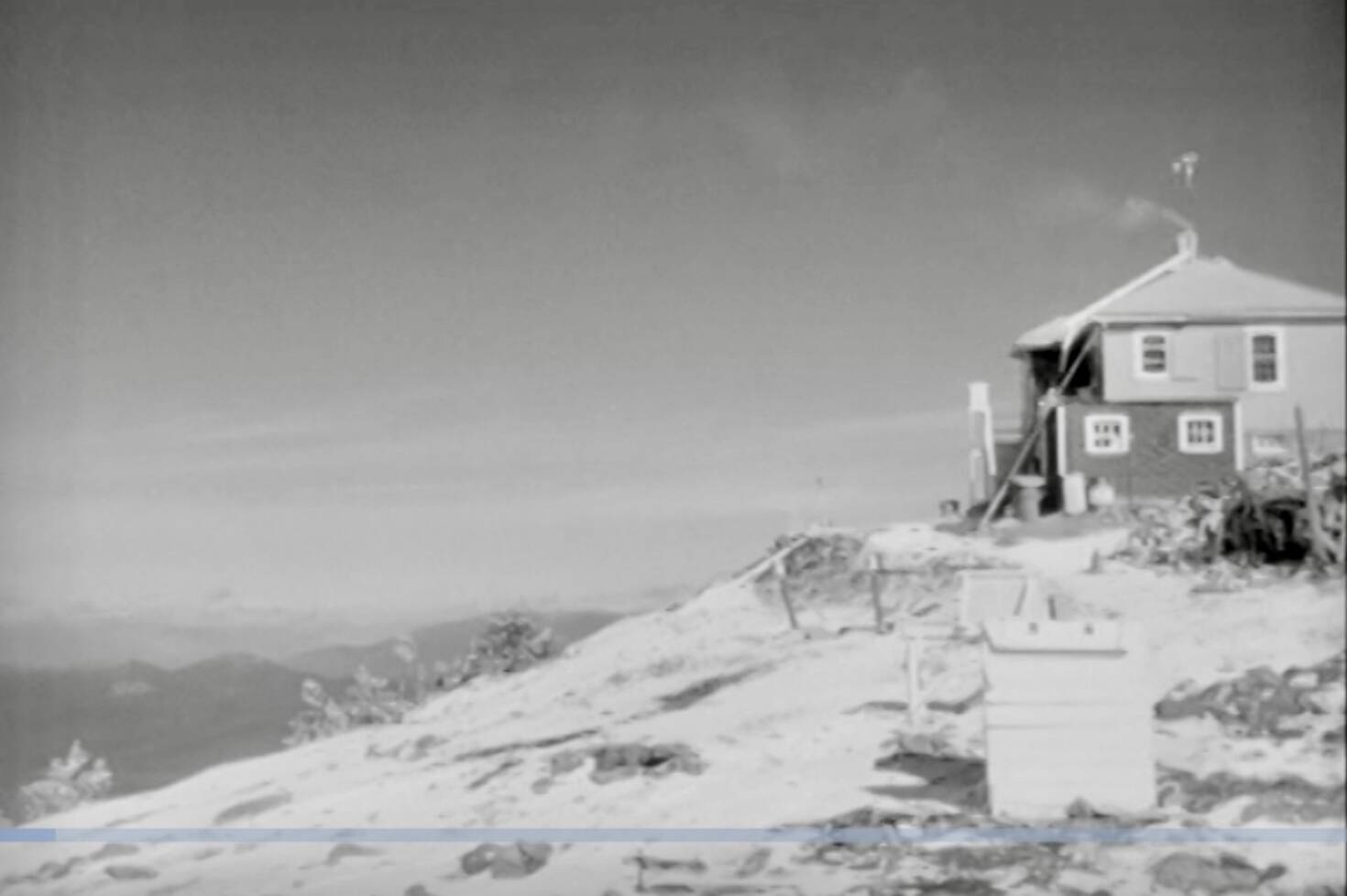It was the highest weather station in Canada, the home an eclectic collection of “professional hermits”.
And you can get a glimpse of the faded slice of national history on a classic newsreel, recently released online.
The Old Glory weather station once stood atop Old Glory Mountain in the Cascade Mountain Range near Rossland. The National Film Board of Canada (NFB) released a 1954 newsreel that includes a short report called “Old Glory Weather Station” on its streaming platform.
The meteorological observatory was constructed in the early 1940s to support commercial air travel with accurate weather data and was staffed continually throughout the year.
The short documentary has been restored and digitized from the NFB’s vault near Montreal as part of an initiative putting out more NFB collection films from Western Canada.
“Life on top of the world is a year-round experience for meteorologists who work at the highest observatory in the Canadian Rockies on Mount Glory in British Columbia,” reads the release.
“I hope your audience will enjoy reconnecting with the Old Glory weather station.”
The 6.5-minute film was shot in 1954 on Old Glory mountain and features not only the meteorological technicians (aka the “Met Men”) at work, but also the late pioneer and horse packer Wilf Gibbard (1913-2011), who supplied the station with goods in the summer months.
The reel explains the daily regimen of meteorologists stationed at the site, and the task of accessing and transporting supplies to the remote and sometimes dangerous location. Supplies included coal for heating and cooking, groceries, fuel for a generator, hydrogen cylinders for the weather balloons, and water in the summer.
The weather station was ultimately destroyed by an over-stoked fire in the wood stove on Jan. 2, 1968.
The film restoration initiative is managed by NFB’s English Program Collections Curator, Camilo Martín-Flórez.
Titled Eye Witness No. 65, the full newsreel is now available for streaming here.
READ ALSO: Transportation ministry’s Road Trip Time Machine series improves 1966 look at TCH
READ ALSO: Timelapse shows ‘tiny specs’ of how Vancouver has changed since 1984

